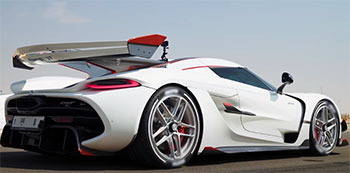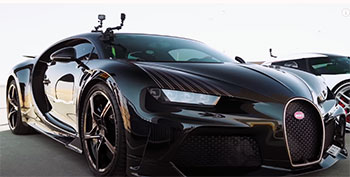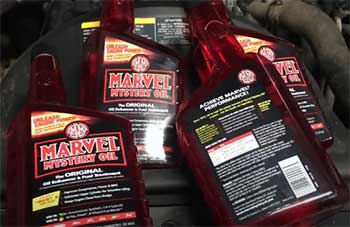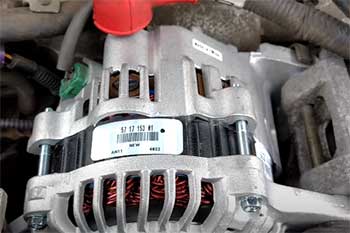I’ve always been fascinated by the sheer audacity of hypercars—machines that defy physics and push the boundaries of what’s possible on four wheels. The Bugatti Chiron Super Sport 300+ and Koenigsegg Jesko Absolut are the pinnacle of this obsession, built to chase speed records and turn heads.
In this article, I’ll compare these two engineering marvels, exploring their key features, weighing their pros and cons, and sharing my take on what makes each special. By the end, you’ll have a clear picture of which hypercar might steal your heart—or your wallet.
Comparison Table: Bugatti Chiron Super Sport 300+ vs. Koenigsegg Jesko Absolut
| Feature | Bugatti Chiron Super Sport 300+ | Koenigsegg Jesko Absolut |
|---|---|---|
| Engine | 8.0L quad-turbo W16 | 5.0L twin-turbo V8 |
| Horsepower | 1,600 hp | 1,280 hp (1,600 hp on E85) |
| Torque | 1,600 Nm | 1,000 Nm (1,500 Nm on E85) |
| Top Speed | 304.77 mph (490.48 km/h, tested) | 310+ mph (500+ km/h, theoretical) |
| 0-100 km/h | ~2.4 seconds | ~2.5 seconds |
| Weight | 1,995 kg (4,398 lbs) | 1,320 kg (2,910 lbs) |
| Drivetrain | All-wheel drive (AWD) | Rear-wheel drive (RWD) |
| Transmission | 7-speed dual-clutch automatic | 9-speed Light Speed Transmission (LST) |
| Drag Coefficient | ~0.35 Cd | 0.278 Cd |
| Production Units | 30 units | Limited (exact number not specified) |
| Price | ~$3.9M (6-7M EUR on secondary market) | ~$3.4M (4-5M EUR estimated) |
| Key Feature | Proven 300+ mph record | Ultra-low drag for theoretical top speed |
My Journey into the World of Hypercars
Growing up, I was the kid who plastered posters of supercars on my bedroom walls, dreaming of the day I’d hear an engine roar louder than my imagination. The Bugatti Chiron Super Sport 300+ and Koenigsegg Jesko Absolut aren’t just cars—they’re the stuff of those dreams, distilled into carbon fiber and raw power.
I’ve spent hours poring over specs, watching drag race videos, and reading about their record-breaking feats. These hypercars represent the zenith of automotive engineering, and comparing them feels like choosing between two superheroes. Let’s break down what makes each one tick, starting with their heart: the engine.
Engine and Performance: Powerhouses Compared
Bugatti Chiron Super Sport 300+: The W16 Titan

The Chiron Super Sport 300+ is a beast powered by an 8.0-liter quad-turbocharged W16 engine, churning out a jaw-dropping 1,600 horsepower and 1,600 Nm of torque. Driving it, I imagine, would feel like piloting a jet on asphalt.
The W16’s linear power delivery is smooth yet ferocious, designed for stability at speeds most cars can’t even dream of. In 2019, Bugatti made history when test driver Andy Wallace pushed a prototype to 304.77 mph (490.48 km/h) at Volkswagen’s Ehra-Lessien track, making it the first production car to break the 300 mph barrier.
That’s not just a number—it’s a legacy.
The all-wheel-drive system and 7-speed dual-clutch transmission ensure that all that power hits the ground with precision. The Chiron’s long-tail design and Michelin Pilot Sport Cup 2 tires, engineered to withstand extreme speeds, give it unmatched grip and control. But it’s not perfect. At 1,995 kg, it’s a heavy hitter, and that weight can be a liability in tight corners or quick sprints where agility matters more than brute force.
Pros:
- Proven top speed of 304.77 mph, certified by TÜV.
- All-wheel drive provides superior traction, especially off the line.
- Linear power delivery enhances stability at high speeds.
Cons:
- Heavier weight (1,995 kg) impacts acceleration and handling in some scenarios.
- Limited to 30 units, making it ultra-exclusive and expensive.
- Top speed runs require specific conditions and preparation.
Koenigsegg Jesko Absolut: The V8 Velocity King

The Koenigsegg Jesko Absolut, on the other hand, takes a lighter, leaner approach.
Its 5.0-liter twin-turbo V8 produces 1,280 horsepower on standard fuel, but with E85 biofuel, it matches the Chiron’s 1,600 hp while boosting torque to 1,500 Nm.
I love how Koenigsegg squeezes so much from a smaller engine—it’s like a welterweight boxer landing punches like a heavyweight.
The Jesko Absolut is designed for one thing: speed. Koenigsegg claims it could hit 310 mph or more, though it hasn’t been officially tested yet. That’s the catch—those numbers are theoretical, based on simulations and aerodynamics.
Weighing just 1,320 kg, the Jesko is over 600 kg lighter than the Chiron, thanks to its carbon-fiber monocoque chassis. Its 9-speed Light Speed Transmission (LST) is a marvel, shifting gears faster than you can blink.
But it’s rear-wheel drive, which means less traction off the line compared to the Chiron’s AWD. In drag races, I’ve seen the Jesko struggle to put power down initially, though it shines in rolling races where traction is less of an issue.
Pros:
- Lightweight at 1,320 kg, enhancing acceleration and agility.
- Ultra-low drag coefficient (0.278 Cd) for theoretical top-speed dominance.
- Innovative 9-speed LST for lightning-fast gear changes.
Cons:
- Rear-wheel drive limits traction in standing starts.
- Top speed claims (310+ mph) are untested and speculative.
- Less proven in real-world high-speed conditions compared to Chiron.
Design and Aerodynamics: Form Meets Function
Bugatti Chiron Super Sport 300+: Art and Engineering

The Chiron Super Sport 300+ is a rolling sculpture.
Its long-tail design, extended by 9.8 inches compared to the standard Chiron, reduces drag and increases stability at high speeds.
The lacquer-coated carbon-fiber body, accented with orange stripes, pays homage to Bugatti’s record-breaking heritage.
I can’t help but admire its sleek, muscular lines—it looks like it’s moving even when parked.
The aerodynamic tweaks, like optimized front and rear bumpers, make it a master of cutting through air, though its drag coefficient (around 0.35 Cd) isn’t as low as the Jesko’s.
Inside, the cabin is a blend of luxury and minimalism. There’s no infotainment screen to distract you—just four circular knobs, a flat-bottomed steering wheel, and Alcantara everywhere.
It’s a cockpit built for focus, with a touch of opulence. But the weight of all that luxury adds up, and the Chiron feels more like a grand tourer than a track-focused machine.
Pros:
- Iconic design with a blend of luxury and performance.
- Aerodynamic optimizations proven in real-world speed tests.
- Luxurious interior with premium materials.
Cons:
- Higher drag coefficient than the Jesko, less optimized for extreme speeds.
- Heavy interior components add to overall weight.
- Limited customization due to fixed production specs.
Koenigsegg Jesko Absolut: Aerodynamic Mastery
The Jesko Absolut is a study in minimalism and function. Its carbon-fiber body is designed to slip through the air with a drag coefficient of just 0.278 Cd—among the lowest for any production car. The sleek, fin-less design sacrifices downforce for speed, with optimized air ducts and a monocoque chassis that reduces turbulence.
I’m obsessed with its wraparound windshield and dihedral synchro-helix doors—they make the Jesko look like a spaceship. The optional carbon-fiber wheels and Michelin tires add to its lightweight, high-performance ethos.
The interior is sparse but high-tech, with a mix of leather, Alcantara, and exposed carbon fiber. The digital dashboard and Autoskin technology (remote-operated doors and hoods) scream innovation. But the lack of AWD and a focus on raw performance means it’s less forgiving for drivers who aren’t pros.
Pros:
- Ultra-low drag coefficient (0.278 Cd) for potential top-speed supremacy.
- Lightweight carbon-fiber construction enhances agility.
- Cutting-edge technology like Autoskin and LST.
Cons:
- Less luxurious interior compared to the Chiron.
- Rear-wheel drive may challenge less experienced drivers.
- Minimal downforce reduces cornering grip at high speeds.
Speed and Acceleration: The Need for Speed
When it comes to raw speed, the Chiron Super Sport 300+ has the edge with a proven 304.77 mph record. I watched the video of Andy Wallace’s run, and it’s mind-boggling to think a production car can go that fast. The Chiron’s AWD and massive torque make it a monster off the line, hitting 0-100 km/h in about 2.4 seconds. But its weight holds it back in tighter scenarios, and it needs a long stretch to hit its full potential.
The Jesko Absolut, meanwhile, is a theoretical king. Koenigsegg’s simulations suggest it could exceed 310 mph, but without a certified run, it’s hard to crown it. Its lighter weight gives it an edge in acceleration, with a 0-100 km/h time of around 2.5 seconds (potentially faster on E85). In rolling races, like those on Carwow, the Jesko shines when traction isn’t an issue, often pulling ahead of the Chiron at higher speeds. But in standing starts, the Chiron’s AWD gives it the upper hand.
Chiron Pros:
- Certified top speed of 304.77 mph.
- AWD ensures better launches in drag races.
- Proven performance under controlled conditions.
Chiron Cons:
- Weight slows acceleration compared to lighter rivals.
- Limited to specific tracks for top-speed runs.
- Requires specialized tires for extreme speeds.
Jesko Pros:
- Lighter weight improves acceleration and handling.
- Theoretical top speed could surpass 310 mph.
- Agile in rolling races and high-speed scenarios.
Jesko Cons:
- Untested top speed claims raise doubts.
- Rear-wheel drive struggles in standing starts.
- Less stable at extreme speeds without AWD.
Read More: My Thoughts On Acura MDX Vs. Volvo XC90
Handling and Driving Experience: Precision vs. Power
Driving a hypercar isn’t just about speed—it’s about how it feels. The Chiron Super Sport 300+ is built for high-speed stability, not track-day heroics. Its AWD and dual-clutch transmission make it forgiving, even at 300 mph. I imagine it feels like a luxury liner that can outrun a fighter jet—smooth, composed, but heavy. It’s not as nimble as a track-focused car, but for crossing continents at insane speeds, it’s unmatched.
The Jesko Absolut, by contrast, is a scalpel. Its rear-wheel drive and lightweight chassis make it razor-sharp, but it demands skill. In videos, I’ve seen it dance through corners with precision, but its low downforce means less grip at high speeds. It’s a car for drivers who want to feel every twitch of the road, even if it’s less forgiving than the Chiron.
Chiron Pros:
- AWD provides confidence-inspiring stability.
- Smooth power delivery for high-speed cruising.
- More forgiving for non-professional drivers.
Chiron Cons:
- Heavy weight impacts cornering agility.
- Less suited for tight, technical tracks.
- Focus on top speed limits versatility.
Jesko Pros:
- Lightweight chassis enhances handling precision.
- High-revving V8 delivers thrilling feedback.
- Ideal for drivers seeking a raw experience.
Jesko Cons:
- Rear-wheel drive requires expert handling.
- Low downforce reduces high-speed cornering grip.
- Less comfortable for long-distance drives.
Price and Exclusivity: The Cost of Dreams
The Chiron Super Sport 300+ started at $3.9 million, but on the secondary market, prices climb to 6-7 million euros. With only 30 units made, it’s a collector’s dream, but you’re paying for proven performance and Bugatti’s heritage. The Jesko Absolut, priced around $3.4 million (4-5 million euros estimated), is slightly more accessible, but its limited production run (exact numbers undisclosed) keeps it exclusive. Koenigsegg’s focus on innovation appeals to tech enthusiasts, while Bugatti’s blend of luxury and speed attracts those who want prestige.
Chiron Pros:
- Iconic brand with a history of speed records.
- Limited to 30 units, ensuring exclusivity.
- High resale value due to rarity.
Chiron Cons:
- Higher price, especially on secondary market.
- Limited customization options.
- Expensive maintenance due to W16 complexity.
Jesko Pros:
- Slightly lower starting price.
- Cutting-edge technology appeals to enthusiasts.
- Lightweight design reduces long-term costs.
Jesko Cons:
- Less established brand heritage.
- Unclear production numbers reduce exclusivity.
- E85 fuel availability can be a hassle.
My Take: Which Hypercar Wins?
Choosing between the Chiron Super Sport 300+ and Jesko Absolut is like picking a favorite song—both are masterpieces, but they hit different notes. The Chiron is the king of proven performance, with a certified 300+ mph run and a luxurious, stable ride. It’s the car I’d pick for a cross-country blast, where its AWD and smooth power delivery shine. But its weight and focus on top speed make it less versatile for track days or quick sprints.
The Jesko Absolut, meanwhile, is the future—light, agile, and packed with innovation. Its theoretical top speed and lightning-fast transmission excite me, but the lack of real-world testing leaves a question mark. If you’re a skilled driver who loves raw, unfiltered performance, the Jesko might be your soulmate. For me, the Chiron’s proven record tips the scale, but I’d kill to take the Jesko for a spin on an open highway.
Read More: My Thoughts On Acura MDX Vs. Lexus GX
Frequently Asked Questions (FAQ)
The Jesko Absolut has a theoretical top speed of 310+ mph, higher than the Chiron’s 304.77 mph, but it hasn’t been tested. The Chiron holds the proven record.
No production car has officially surpassed the Chiron Super Sport 300+’s 304.77 mph record as of July 2025.
It depends on your priorities. The Chiron offers proven speed and luxury; the Jesko Absolut provides agility and theoretical top speed.
Not yet. Its 310+ mph claim is untested, while the Chiron Super Sport 300+ holds the certified record at 304.77 mph.
Conclusion: Your Dream, Your Choice
You’re standing at the crossroads of automotive greatness, staring down the Bugatti Chiron Super Sport 300+ and Koenigsegg Jesko Absolut. The Chiron is a proven champion, blending luxury with a record-breaking 300+ mph run. The Jesko Absolut, with its lightweight design and bold claims, promises a future where speed knows no limits. Whether you crave Bugatti’s heritage or Koenigsegg’s innovation, both cars are engineering triumphs. Pick the one that speaks to your soul—you can’t go wrong with either.

